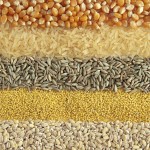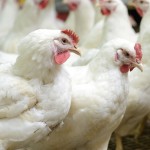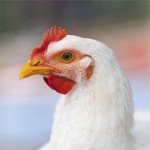So you are on a family vacation across the border into the United States and you want to buy some chicken for dinner. You go into a grocery store and look for the chicken and notice it is seems bigger than our chicken in Canada and it is yellow. Why the difference? If you are from Ontario the color will be the same as you are used to because Ontario and the United States use corn based rations which result in a yellow pigment to the meat. Western Canada uses wheat based rations so the chicken has no color. The size difference is due to how old the birds are when they go to market. The older they are, the heavier they are. The United States markets at an average of 47 day with an average weight of 2.78 kgs, Canada has an average market age of 37 days and 2.33 kgs per bird.
Most flocks of chicken are grown ‘as-hatched’ which means a fairly even split of male and female birds. As in humans there is a size discrepancy between the two, with male chickens tending to be two days heavier than the females at the same age. Sometimes the flocks are sexed, which means males and females separated at the hatchery, and the farmer will get straight males or straight females. This is done most times to supply different retailers needs. Some retailers and restaurants sell whole birds and some chicken breasts, legs, and wings in separate packages. For example, there is the whole bird rotisserie market which requires birds of a certain weight range so that all the birds on the spit are very close to the same size. The same criteria is needed for the trays of breast meat marketed in stores, we don’t want to see one package with six big breasts and the next with 12 small ones. Or if you are selling a ‘bucket’ of chicken with 21 pieces the chicken provided has to be within a certain weight range so that 21 pieces fit in the bucket.
Genetics and technology have played a large role in speeding up the growth of our broiler chicken. The ingredients used to feed them are essentially the same as they were 50 years ago but our ability to determine what the bird’s nutritional needs and the best environment needed for them to be healthy has vastly improved. Canadian chicken does not contain added steroids or hormones. I do not know of any such products available for chickens and if there were such products they would require approval by the Canadian Food Inspection Agency for use in Canada. Genetic selection means selecting the birds that exhibit the trait we are looking for and mating the male and female together so that the desired trait has the best chance of being exhibited. For example, Canadian consumers want breast meat so as a result the breeding companies measure the breast meat on their birds, select the birds that have more breast meat, mate the male and female to have baby chicks, and keep doing this until the desired level of breast meat is obtained.
Fifty years ago chickens were fed by hand, had open water pails that were easily contaminated with litter or worse as the birds drank, and manually operated venting to have adequate air movement. Today barns are computerized to monitor feed and water supply, light intensity, static pressure, humidity level, temperature and a host of other environmental parameters to help ensure that the birds have the best environment possible for their health and welfare. Barns are set up to ensure that every chicken running around the barn has ample access to feed and water and the climate is controlled so that they are not chilled on cold winter days or subject to 100 degree heat. A healthy chicken requires ample space, good feed that provides all the nutrients required, protection from predators, ample light, plentiful clean water, and clean air. All these factors are necessary to grow good, healthy chicken.



